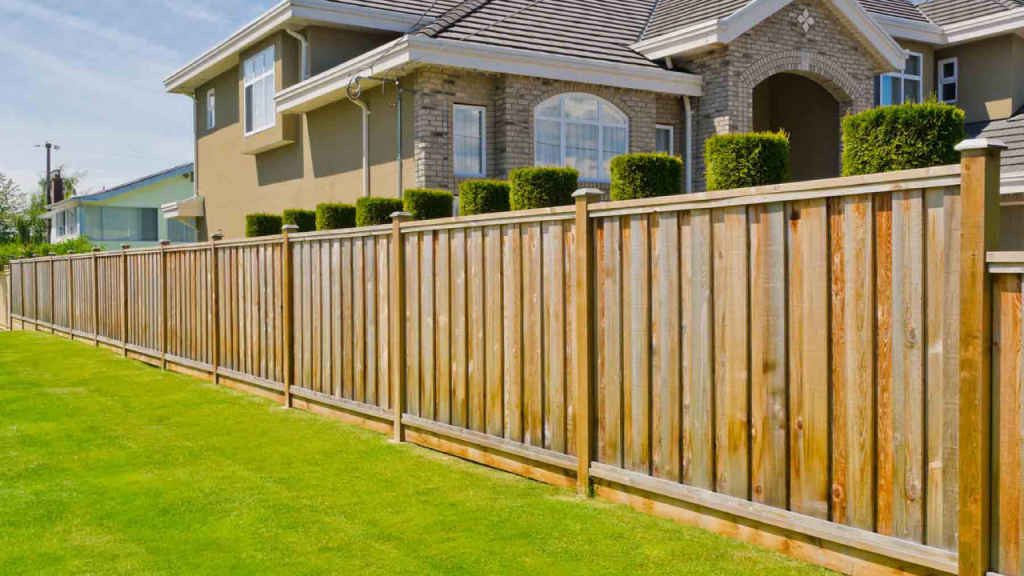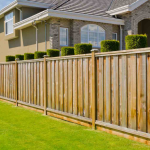

Choosing the right fence for your residence is a crucial decision that can enhance your home’s aesthetics, privacy, and security. With a plethora of options available, making the right choice can be overwhelming. This guide will help you navigate the key factors to consider, ensuring that your fence meets your needs and complements your property.
1.Determine the Purpose of Your Fence
The first step in choosing the right fence is understanding why you need one. Fences serve various purposes, and identifying your primary goal will narrow down your options:- Privacy: If privacy is your main concern, consider fences that offer complete visual obstruction. Wood, vinyl, and composite fences are excellent choices, providing both height and solid structure to block sightlines effectively.
- Security: For added security, opt for sturdy and tall fences made from durable materials like wrought iron, steel, or aluminum. These fences can deter intruders and provide a secure boundary around your property.
- Aesthetics: If enhancing curb appeal is your goal, decorative fences made from wood, vinyl, or ornamental metal can add charm and value to your home. Consider designs that complement the architectural style of your house.
- Containment: For pet owners or families with children, a secure and safe containment fence is essential. Chain-link, vinyl, or wood fences with appropriate height and durability can keep your loved ones safe within your property.
2.Consider the Material
Different materials offer varying levels of durability, maintenance, and aesthetic appeal. Here are some common fencing materials to consider:- Wood: Wood fences are popular for their natural beauty and versatility. They can be painted or stained to match your home’s exterior. However, wood requires regular maintenance to prevent rot, warping, and pest damage.
- Vinyl: Vinyl fences are low-maintenance and durable, resistant to rot, pests, and weather conditions. They come in various styles and colors, offering both privacy and decorative options.
- Metal: Metal fences, including wrought iron, aluminum, and steel, provide excellent security and durability. They require minimal maintenance and can be powder-coated for added protection and aesthetic appeal.
- Composite: Composite fences are made from a combination of wood fibers and plastic, offering the look of wood with the durability of vinyl. They are low-maintenance and resistant to rot and pests.
- Chain-Link: Chain-link fences are cost-effective and durable, ideal for containment and security purposes. They can be customized with coatings and privacy slats to enhance their appearance.
3.Assess Your Budget
Your budget plays a significant role in determining the type of fence you can afford. Consider both the initial installation cost and long-term maintenance expenses:- Initial Cost: Materials like vinyl and metal may have higher upfront costs compared to wood or chain-link. However, their durability and low maintenance can save you money in the long run.
- Maintenance: Wood fences require regular upkeep, including staining, painting, and repairs. Vinyl, metal, and composite fences, on the other hand, are low-maintenance and may incur lower long-term costs.
4.Check Local Regulations and HOA Guidelines
Before installing a fence, it’s essential to check local building codes and Homeowners Association (HOA) guidelines. These regulations may dictate your fence’s height, style, and placement. Ensuring compliance will prevent any legal issues or conflicts with neighbors.5.Consider Climate and Weather Conditions
Your area’s climate can impact your fence’s longevity and performance. Choose materials that can withstand local weather conditions:- Humid or Wet Climates: Opt for materials resistant to moisture, such as vinyl, metal, or composite. Avoid wood, which can rot or warp.
- Cold Climates: Consider materials that can withstand freezing temperatures and snow. Metal and composite fences are good choices, while wood may require additional treatment.
- Windy Areas: Choose sturdy materials like metal or reinforced vinyl for regions prone to strong winds. Ensure the fence is securely anchored to withstand wind pressure.
6.Evaluate Maintenance Requirements
Different fencing materials have varying maintenance needs. Consider how much time and effort you are willing to invest in maintaining your fence:- Low Maintenance: Vinyl, metal, and composite fences require minimal upkeep, making them ideal for busy homeowners.
- Moderate Maintenance: Wood fences need regular staining, painting, and repairs to maintain their appearance and durability.
- High Maintenance: Ornamental metal fences may require occasional rust prevention treatments and repainting.
7.Think About Style and Design
Your fence’s style and design should complement your property’s overall aesthetic. Consider the following elements:- Color: Choose a color that matches or enhances your home’s exterior. Neutral colors like white, black, and brown are versatile and timeless.
- Height: Ensure the height of the fence aligns with your needs for privacy, security, and local regulations.
- Pattern and Texture: Decorative elements, such as lattice patterns, scalloped tops, or textured surfaces, can add visual interest to your fence.


